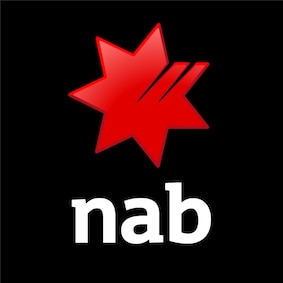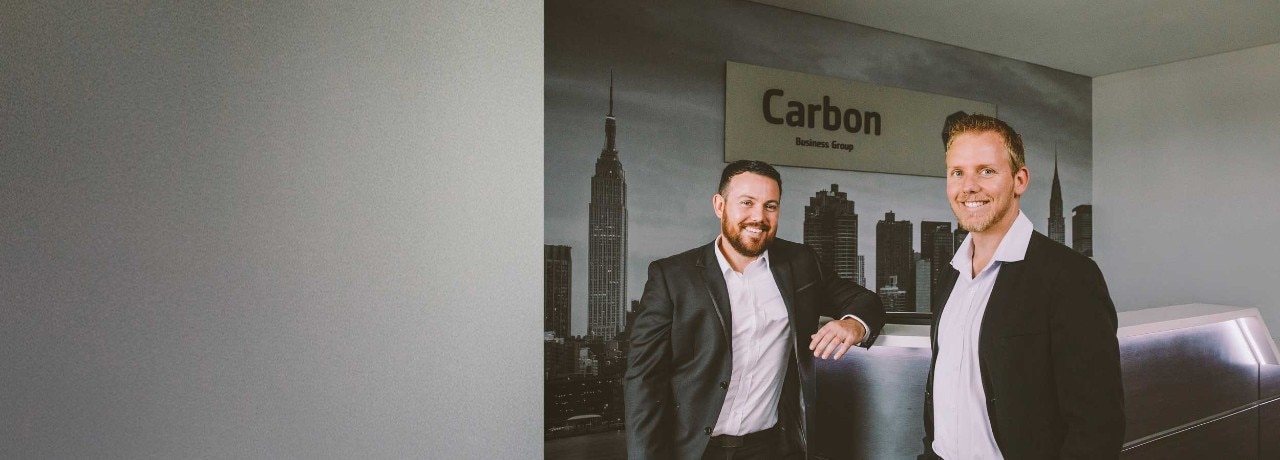Buying multiple businesses | Business acquisition - NAB
In just two years, Jamie Davison and business partner Nathan Hood acquired six businesses. Davison explains how they did it – and the rookie errors others may wish to avoid.
Lessons learnt buying six businesses, fast
Acquire six businesses in two years? Tick. Set mid-term goal of developing 10 hubs? Tick. Mistakes made and lessons learned? Tick. Jamie Davison of Carbon Group knows a lot about life on the acquisition trail. He could no doubt give a master class in what to ask when buying a business!
Davison, 33, is what you might call an overachiever. At university he earned three qualifications: a Bachelor of Commerce, Bachelor of Business Management and Master of International Economics & Finance.
Then, after a decade “learning all the stuff you don’t learn at uni” working for other businesspeople, he launched his first business, Fortuna Bravado.
The year was 2012 and Davison was still on the right side of 30.
“It was a Perth-based bookkeeping firm that delivered a fast, accurate and affordable service,” Davison explains. “I launched when cloud-based bookkeeping was starting to take off and had a 100 per cent Xero practice with 100 per cent fixed fees from the get-go.”
Davison began trading referrals with a nearby accountant called Nathan Hood. “It got to the point where we were exclusively referring clients to each other. In 2014 we thought we may as well make it official and become partners,” explains Davison.
“From the start, we were both excited by the idea of having enough scale to get into a position where we could start creating business ‘hubs’: one-stop shops where people could go for accountancy, bookkeeping, general insurance, mortgage broking and so on.”
Buying an existing business
Setting goals is an essential part of the business planning process. This is especially true when you're looking to buy an established business – or businesses – in a short period of time. And it's clear that Davidson and Hood's market expansion strategy (which includes expanding into global markets in time) is paying off nicely.
The pair acquired six businesses in the space of two years and are well on their way to reaching their mid-term goal of developing 10 ‘hubs’. Their enterprise, Carbon Group, has been showered with industry awards, the most recent of which was being selected out of 11,500 accounting firms as Boutique Firm of the Year at the Australian Accounting Awards.
“We’ve got three hubs in Perth, have just launched one in Melbourne and are working towards establishing others in all states and territories,” Davison says. “After that, we will expand into countries with similar legal and economic systems such as Canada, New Zealand and the UK.”
So everything Davison touches immediately turns to gold, right? Not so. “We made heaps of mistakes!” Davison laughs. Here he shares two rookie mistakes others should avoid, plus three key learnings he and Hood have made along their business journey.
Rookie mistakes
No one said growing a new business would be easy. For Davison, however, there were two overriding challenges to overcome – challenges the pair failed to appreciate initially.
Rookie mistake #1: not understanding the optics of a merged business
As an established business owner with a good track record, securing business loans and finance might be relatively easy. But merging with another business owner complicates things, says Davison.
“To start with, we couldn’t get access to the capital we needed to grow,” he explains. “We had impressive individual trading histories but failed to realise that after we merged we’d have an unproven new business that nobody would want to lend to. Fortunately, NAB were able to lend to us. ”
Rookie mistake #2: underestimating the impact of acquisitions on people
“We could scale up through acquisition a lot faster than through organic growth and the cost of capital, once we could access it, was low,” Davison says. “So we acquired an accounting firm and two bookkeeping businesses all at once.”
Over a period of just nine months, Carbon Group had doubled its staff and exponentially grown its client list. At least on paper.
“Understandably, our new staff wanted to know how things would operate following the acquisitions,” Davison says. “But given we’d taken on four new businesses we just couldn’t spend enough time with everyone. Once we got over that, the issue of cultural fit emerged. Our culture is, for want of a better word, a ‘young’ one. There’s a focus on innovation, fun and passion. Some of the new staff embraced that while others didn’t and moved on.”
It wasn’t just staff moving on post-acquisition.
“If you suddenly have, say, 100 new clients it’s hard to make contact with them all quickly,” Davison says. “Even if you do manage to do that, they don’t have a relationship with you the way they did with the previous owner. Many of those new clients are going to shop around and a proportion will go elsewhere.”
3 essential lessons
Davison shares his advice for a smoother business acquisition journey.
Key learning #1: find a complementary business partner
Davison and Hood are the same age and similarly ambitious. But Davison advises those considering entering into a partnership to focus on differences.
“You want someone who has a different skill set to you,” he says. “Someone who has different networks. That way you end up with one plus one equalling three rather than one and a half.”
Key learning #2: equity is a powerful motivator
“With the last two businesses we bought we purchased 50 per cent rather than 100 per cent of the equity,” Davison says.
“As well as a big pay day, that meant the owner got to be part of the Carbon Group and gain access to our resources. We got someone with an ownership mentality to run the business. The plan is to allow staff who’ve clocked up two years and met certain KPIs to buy equity in the individual businesses. When someone has skin in the game, they run harder. And Gen Y employees, in particular, are motivated by the prospect of having a stake in the business they work for.”
Key learning #3: you can scale first… and systematise later
The conventional approach for business owners is to systematise their existing business as much as possible and only then start buying new ones. Davison and Hood, however, did it the other way around.
“I don’t think you can wait around until all your ducks are in a row to start,” Davison says.
“Our plan was to keep our overheads roughly the same while increasing our revenue via acquisitions. Then, once we’d scaled up, we could start employing people to manage those parts of the business, such as IT, HR and marketing, that we didn’t necessarily have an aptitude for. At that point, Nathan and I would be able to stop wearing so many hats and concentrate on the things we’re best at. So far, that plan seems to be working pretty well.”
Thinking about buying a business? We have tips, tools and solutions to back you. Request a call back or call us on 13 10 12.
Other business moments
What you need to apply for a business loan
Learn more about the financial documents you'll need to provide when applying for a business loan.
Starting a business with a simple marketing strategy
How two entrepreneurs succeeded thanks to a simple marketing plan.
Grow your business with vehicle and equipment finance
How mobile food company Tasty Fresh buys a truck every two weeks.
Related products and services
Loans and finance
Starting a business or looking to expand? Our range of business loans, overdrafts, equipment and trade finance options can help you achieve your goals.
Business calculators
NAB has a range of business calculators and tools, along with a national network of business bankers to help you.
Online business banking
Make your life easier with NAB's online business banking facilities. Find the product that suits your needs.
Get in touch
Contact us
Explore our business banking contact information and get support with a wide range of products, services and topics.
Visit a NAB branch
Our business bankers are located all around Australia.
Important information
Apologies but the Important Information section you are trying to view is not displaying properly at the moment. Please refresh the page or try again later.
The information contained in this article is intended to be of a general nature only. It has been prepared without taking into account any person’s objectives, financial situation or needs. Before acting on this information, NAB recommends that you consider whether it is appropriate for your circumstances. NAB recommends that you seek independent legal, financial and taxation advice before acting on any information in this article.





